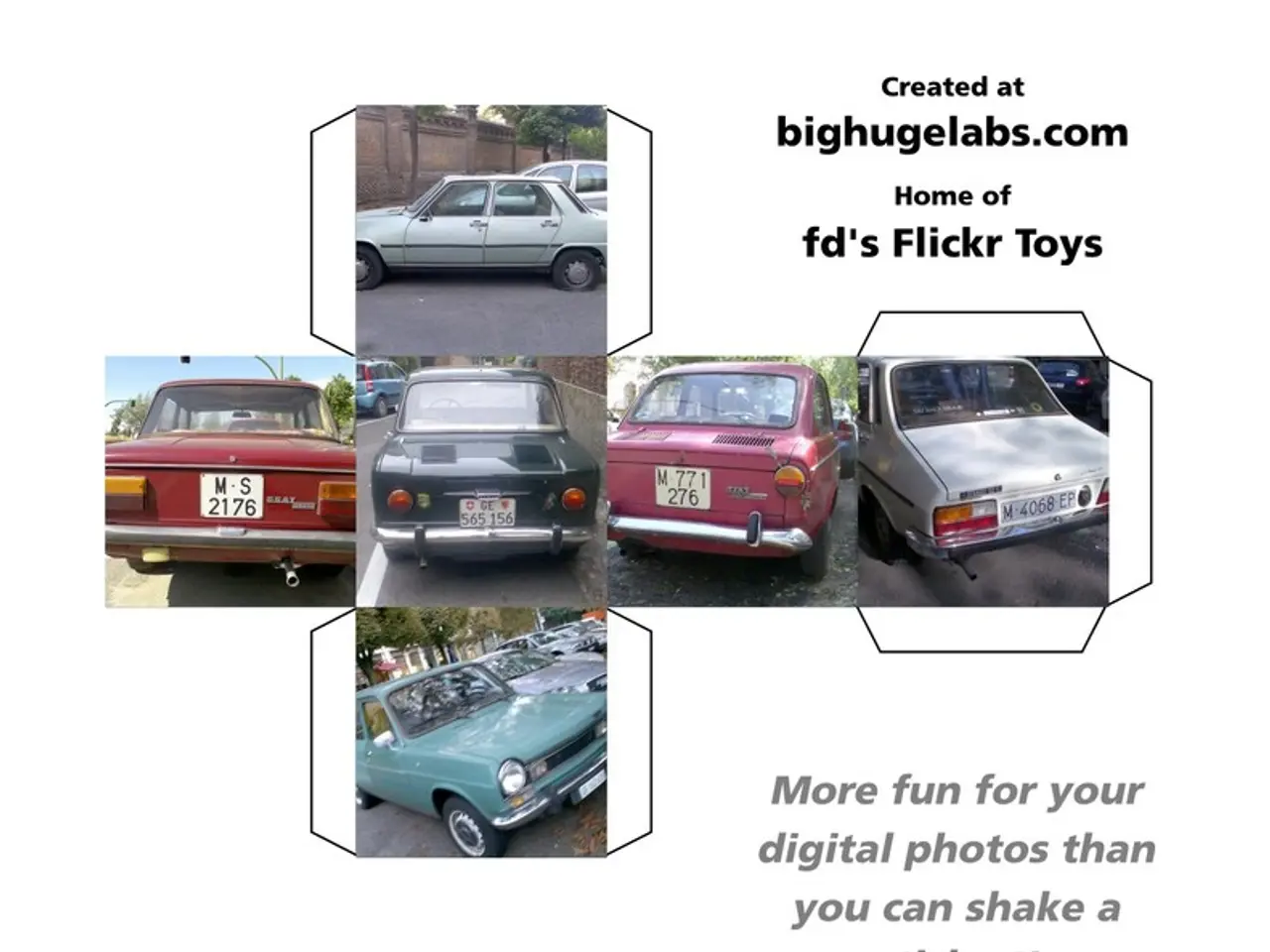Transformation of Elite Vehicle Engineering for Top Speed and Efficiency
The Evolution of Automotive Engineering: A Journey Through Time and Culture
The world of automotive engineering has been shaped by a fascinating blend of cultural influences and technological advancements, transforming from the muscle cars of the '60s to the modern electric vehicles (EVs) we see today.
The journey begins in the late 19th century with pioneers like Ransom E. Olds, who founded Oldsmobile in 1897 and produced the first mass-produced gasoline car in America, the Curved Dash Oldsmobile (1902). This car introduced important innovations such as the first speedometer and third-party parts sourcing, reflecting early moves towards industrialized mass production [1].
The 1920s and 1930s saw technical developments including the first monobloc V8 engines, chrome plating, automatic choke, and innovations impacting car style and comfort. During this period, mass production methods were refined by key players like Ford with the assembly line, which dramatically lowered costs and increased accessibility [1][5].
American automotive culture initially emphasized style, mass production, and accessibility. Economic crises such as the Great Depression forced consolidation of manufacturers but also drove innovations like the V8 engine and automatic transmission [5]. Cars became symbols of modernity, status, and national industry.
Interest in electric vehicles surged during the 1970s oil crisis, prompted by geopolitical conflicts and subsequent energy shortages, which raised fuel prices and triggered long lines at gas stations in the U.S [2]. Early electric models like GM’s Electrovette and General Electric’s Citicar appeared but were limited by battery technology. Government incentives in the late 1970s aimed to boost electric and hybrid vehicle development, although commercial success lagged until battery technology advanced [2].
A breakthrough came in the 1980s and 1990s with the invention of lithium-ion batteries by Goodenough, Yoshino, and Yazami. This technology underpins modern EVs by enabling longer range and better performance, facilitating the rise of companies like Tesla and others spearheading the EV market today [2].
EVs are not only technological artifacts but cultural technologies that embody narratives about sustainability, innovation, and future mobility [4]. Marketing campaigns, especially in countries like China and Australia, blend eco-aspirations with industrial ambitions while also exposing ongoing issues like resource extraction and labor exploitation embedded in battery supply chains.
The fusion of combustion and electric engineering is seen as a way to harmonize the power of traditional engines with the innovation of electric vehicles. Engineers at the automotive convention are exploring initiatives for hybrid technologies that seamlessly blend combustion and electric systems. The proposed concept of a gasoline engine with electric assistance could be a key feature in future performance vehicles.
Each era of automotive engineering reflects a cultural shift that changes the perception of performance. The speaker, who has explored various eras of automotive engineering, from muscle cars of the '60s to modern electric vehicles, developed an interest in automotive engineering due to their father's passion for cars.
The speaker recalls the mesmerizing sound of a V8 engine and the sleek design of a classic Corvette. The shared narrative of automotive engineering drives progress forward, with each generation contributing its ethos to the field. The journey of automotive engineering is ongoing, with a focus on creating collaborative solutions to ensure future generations inherit the passion for the field.
The cultural influences of Japan, Germany, and America shape automotive engineering in unique ways, leading to collaborative innovations and designs. The Japanese automotive industry is known for its precision and efficiency, reminiscent of the annual cherry blossom festival's focus on beauty and detail. European automotive engineering emphasizes luxury and high performance, with brands like Ferrari and Porsche setting industry benchmarks.
There is a shift towards electric vehicles (EVs), with Tesla being an example of a powerful electric vehicle. The future of high-performance automotive engineering is rich with potential for further integration of sustainability, safety, and performance. The speaker, who has fond memories of watching their father work in a garage and listening to stories about legendary races, believes that the shared narrative of automotive engineering drives progress forward.
For more information, visit vtsuperchargers.com for extra and complementary information about the topic of combining combustion and electric engineering. The next post offers a more expansive view on the subject of combining combustion and electric engineering.
[1] The Curved Dash Oldsmobile [2] The History of Electric Vehicles [3] The Great Depression and the Automobile Industry [4] Electric Vehicles as Cultural Technologies [5] The Ford Model T
- The blend of cultural influences and technological advancements has shaped the evolution of beauty in automotive engineering, from the iconic V8 engines of the 1920s and 1930s to the modern media-hyped electric vehicles (EVs) we see today.
- Fashion and lifestyle have a significant influence in the marketing campaigns of electric vehicles, as eco-aspirations meet industrial ambitions, demonstrating a shift towards technology that embodies narratives about sustainability, innovation, and future mobility.
- Lifestyle technology, such as hybrid systems, combines the power of traditional engines with the innovation of electric vehicles, showcasing a fusion that will potentially set the tone for future performance vehicles in the sports world.
- Be it the precision and efficiency of Japanese designs, luxury and high performance of German brands, or the symbol of modernity and American status initially projected by mass-produced muscle cars, the cultural influences of different countries have impacted the automotive industry significantly.
- With the rise of electric-vehicles like Tesla, the world of high-performance automotive engineering is moving towards a future rich with potential for the integration of sustainability, safety, and performance, reflecting the shared narrative that drives progress in the realm of technology.




